Articles
The Materials of the Workshop “The oil Study of a Plaster Foot”
While studding figure painting you should especially focus on reviewing feet and hands.
It is reasonable to make sketches of feet and hands of a life model. Also it is worth to devote your attention to plaster ones. Plaster model enables to examine the form of foot deeper because it is self-coloured.
Nowadays the market of plaster models needs to be improved. The foot of David (Michelangelo) is the best one out of everything you can by now.
The light source should be placed in order to make the shape more obvious. Considering the fact that the surface on the instep and the arch in front have a really soft border we should place the light slightly above or slightly from the front. In this case we will have a tonal difference.
Prime a primed cardboard additionally in a warm dark tone, in an acrylic umber, for instance. While the primer is getting dry, we are making a tonal sketch in order to analyze the tonal relations as well as the form of the foot.
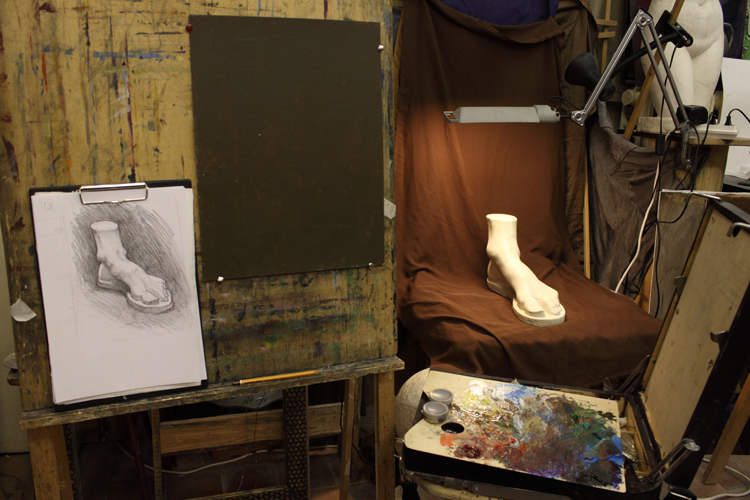
Obviously, it is preferable to draw a plaster foot from different angles before painting it in oil. That experience may give us a clear conception of the shape of the foot. As a result, while painting, we will not only copy the tonal picture, but form the construction of the object.
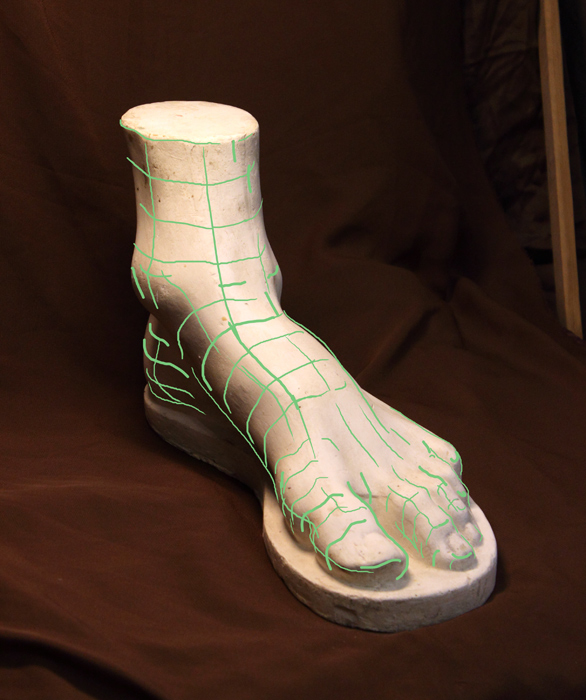
Start with big parts. In this particular case start with drawing illuminated areas. Placing them we organize the composition.
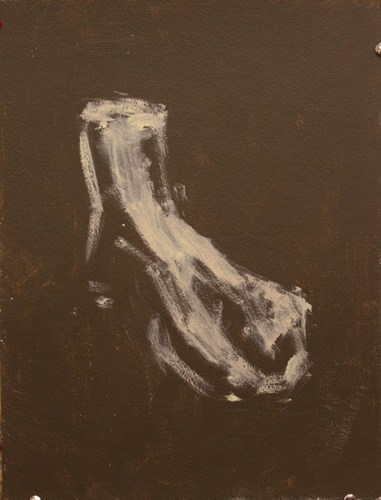
From time to time check the entire character of the form and the proportions at a distance. Step by step take undertints.
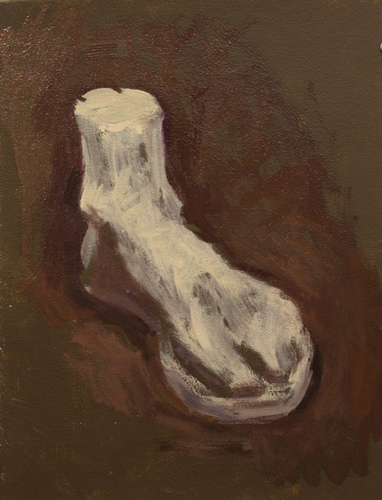
Gradually add more layers and make the outline more precise.

Make the tone darker in the border between planes.
Try to alter all the parts of your work simultaneously. To form three-dimensional space make the areas in the foreground more contrast and softer those which are placed in the background. Periodically look at your work at a distance.
Do not forget that we may observe the work at a distance sharply or with defocused eyes.
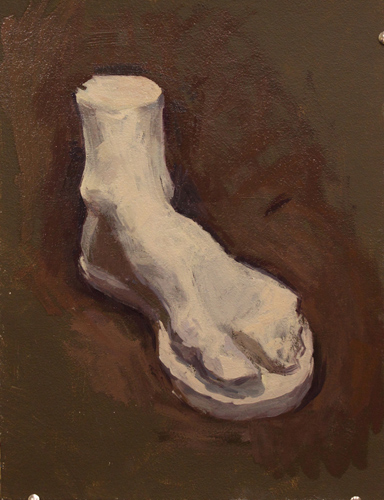
Watching with defocused eyes helps us to estimate the work more correctly and make right decisions.

Add nuances and decide when you may consider the work as complete.

Oleg Toropygin